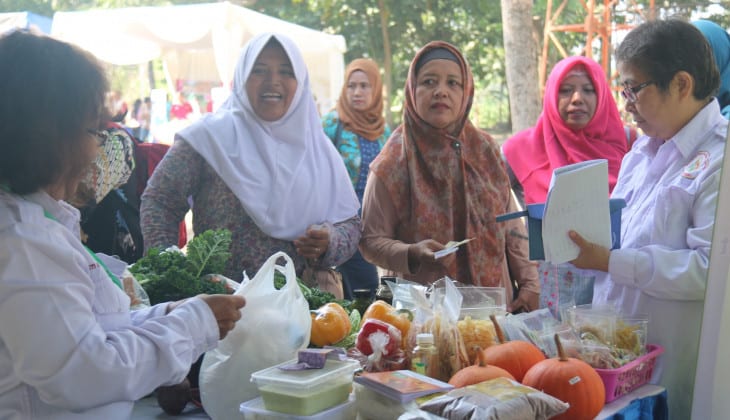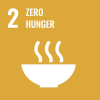
Center for Agrotechnology Innovation (PIAT) of Universitas Gadjah Mada has collected 1,111 varieties of vegetables from various regions in Indonesia. The collections are stored in PIAT-UGM’s vegetable genebank, which is the first in Indonesia to manage a germplasm collection of vegetable crops.
PIAT researcher, Dr. Siwi Indarti, said most of the collections were long bean, chilli, cucumber, even endangered vegetables such as winged bean and Cosmos caudatus. “We wish to collect local tropical vegetables and develop them for cross-breeding,” said Siwi to reporters after opening the UGM Vegetable Expo which took place at the PIAT complex in Kalitirto area, Sleman regency on Friday (24/8)
According to Siwi, the project will continue by involving students who take part in the Student Community Service program across Indonesia. Normally, the students would collect vegetable seeds from the areas they were fielded in. “Then we sort the seeds, breed and characterize them to identify their specific excellent traits,” she said.
For example, chili peppers have their own characteristics based on regions in terms of disease and pest resilience and productivity. “We will cross-breed the plant with similar vegetables from other regions to get new varieties,” she added.
Furthermore Siwi explained the center had started the project since last year. Although relatively new, the Centre plans to launch new varieties that resulted from the cross-breeding of various genetic collections in 2022. “Our goal in 2022 is to have new varieties,” she said.
The UGM Vegetable Expo was held from 23-24 August as an effort to promote vegetable consumption from high quality vegetables. “We want to educate people on the importance of consuming vegetables,” she added.
Asti Irwandiyah, farmer in Yogyakarta, said she teamed up with around 300 farmers to produce high quality vegetables through sustainable agricultural projects. The harvest will be purchased and marketed by the farmer group at a high price. “We want to cut the distribution chain of the farmers’ crops, later we market them online and offline through the community,” she said.
Although it has only been running for one year, said Asti, the revenue of the production ranged between Rp1-2 million per day. Previously, farmers were involved in farmer schools so that they could process the harvested vegetables and fruits into valuable products. “We train them on managing post-harvest projects and grow rare plants, such as making juices of drumstick tree leaves, centella leaves, beet, ginger crystallized fruits as well as varieties of salads,” she added. They made sure that the farmers refrain from using preservatives, colouring, thickener and whitener, she explained.
Source: https://ugm.ac.id/id/berita/18315-ugm-koleksi-1-111-ragam-sayuran-dari-seluruh-indonesia



